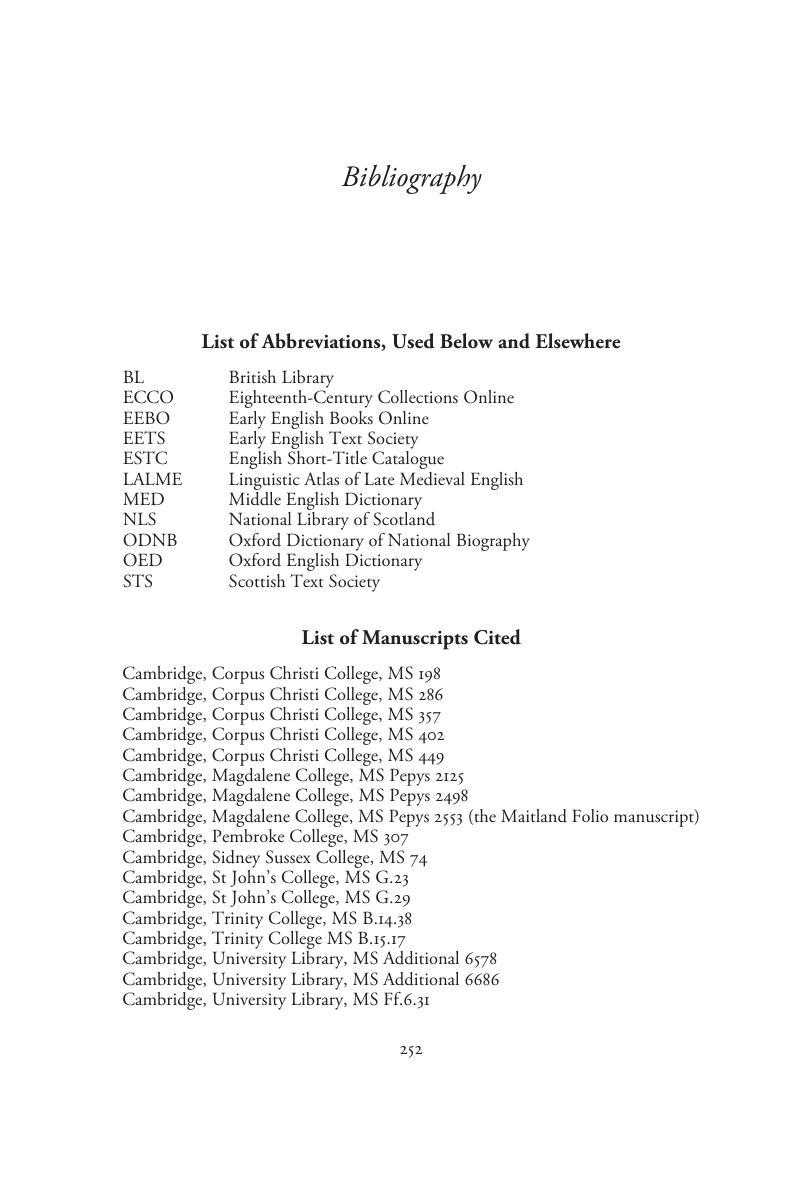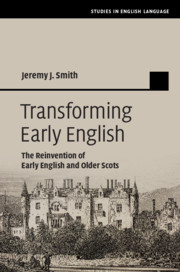Book contents
- Transforming Early English
- Studies in English Language
- Transforming Early English
- Copyright page
- Dedication
- Contents
- Preface
- A Note on the Transcriptions
- Introduction
- Chapter 1 On Historical Pragmatics
- Chapter 2 Inventing the Anglo-Saxons
- Chapter 3 ‘Witnesses Preordained by God’: The Reception of Middle English Religious Prose
- Chapter 4 The Great Tradition: Langland, Gower, Chaucer
- Chapter 5 Forging the Nation: Reworking Older Scottish Literature
- Chapter 6 On Textual Transformations: Walter Scott and Beyond
- Appendix of Plates
- Bibliography
- Index of Manuscripts and Early Prints
- Subject Index
- References
Bibliography
Published online by Cambridge University Press: 08 May 2020
- Transforming Early English
- Studies in English Language
- Transforming Early English
- Copyright page
- Dedication
- Contents
- Preface
- A Note on the Transcriptions
- Introduction
- Chapter 1 On Historical Pragmatics
- Chapter 2 Inventing the Anglo-Saxons
- Chapter 3 ‘Witnesses Preordained by God’: The Reception of Middle English Religious Prose
- Chapter 4 The Great Tradition: Langland, Gower, Chaucer
- Chapter 5 Forging the Nation: Reworking Older Scottish Literature
- Chapter 6 On Textual Transformations: Walter Scott and Beyond
- Appendix of Plates
- Bibliography
- Index of Manuscripts and Early Prints
- Subject Index
- References
Summary

- Type
- Chapter
- Information
- Transforming Early EnglishThe Reinvention of Early English and Older Scots, pp. 252 - 281Publisher: Cambridge University PressPrint publication year: 2020



